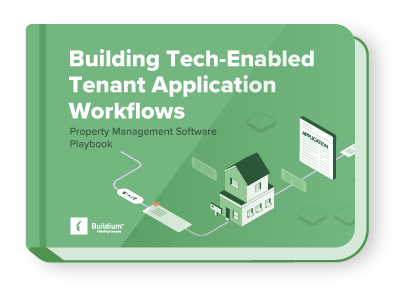Growing a property management company traditionally means building a strong local reputation, gradually attracting new clients, and expanding door count over time. While this approach still works, it can take several years to reach significant growth milestones. Many property managers today are choosing another way to grow: acquiring other property management companies.
Start your free trial today!
Try Buildium for free for 14 days. No credit card needed.
Start Your TrialIn Buildium’s recent research, more than a third of business owners surveyed said they were planning acquisitions to expand their portfolios. If you find yourself in that camp or just want to learn more about what a successful acquisition looks like, this guide is for you. We’ll walk you through the key steps and considerations for expanding your business through acquisitions.
Why Acquire Another Property Management Company?
Growing through acquisitions lets you expand your business in a fraction of the time it takes to grow organically. When you acquire another company, you can quickly add new rental units under management, enter new markets, and broaden the types of properties you oversee. Plus, you gain seasoned staff, proven processes, and established client relationships.
Acquisitions help you strengthen your market position and operate on a bigger scale without losing the personalized service that local property managers are known for. It’s a main reason why acquisitions have become increasingly popular in the industry.
Diversification through Acquisition
Acquisitions bring a variety of other benefits. They add stable recurring revenue and diversify your portfolio by introducing new property types such as multifamily, commercial, or HOA communities. They also help you expand geographically without spending years building brand awareness in new regions.
Many acquisitions come with teams that are experienced in a particular region or property type with trusted local vendors, and well-established workflows that cater to the specific properties and communities you’ve added. This specialized expertise can shorten your learning curve and accelerate your overall growth.
Strategic vs. Opportunistic Acquisitions
There are two main approaches to acquisitions: strategic and opportunistic. Strategic acquisitions align with a clear long-term plan. You might target specific regions, property types, or specialized talent as part of your growth strategy. Opportunistic acquisitions happen when unexpected opportunities arise—perhaps a competitor wants to retire, or a business owner decides to exit the industry.
Both approaches can create value. Strategic acquisitions keep you focused on your goals, while opportunistic deals can offer unique advantages. Being prepared lets you move quickly when the right opportunity comes along.
Laying the Groundwork: Preparing Your Business for Acquisition
Before you jump into acquiring other companies, it’s important to get your own business ready for the challenges that come with growth. Solid prep work reduces risks and sets the stage for a successful transaction.
Assessing Your Current Operations
Before you start looking at other companies to acquire, make sure your own business operations are solid. Review your financial health by analyzing cash flow, expenses, and profit margins to confirm that you’re positioned for sustainable growth. Check that your internal systems support efficient service delivery on a larger scale.
Also, consider your team’s readiness. Do your leadership and staff have the capacity and mindset to manage an expanded portfolio? Software that you may already be using can help during this planning page. For example, Buildium’s business performance and analytics dashboard can help you monitor these key areas in real time and identify any gaps you need to address before moving forward.
Building an Acquisition Plan
Once you’re confident in your foundation, draft a formal acquisition plan. Define your objectives clearly. Are you aiming to increase your door count, enter new cities, or expand into niche markets? Look at recent property management market insights and industry reports to understand emerging trends. The more in tune you are with current conditions, the more focused and effective your expansion plan will be.
Set a realistic budget and decide how you’ll finance acquisitions. Then, outline the profile of your ideal acquisition targets—those that fit your company culture, market focus, and operational style.
Finding the Right Property Management Companies to Acquire
Finding the right acquisition targets requires a focused approach, combining research, networking, and thorough evaluation. This section will guide you on where to look and what to consider when identifying suitable companies to acquire.
Where to Look
Start your search close to home. Local competitors often offer the most straightforward acquisition opportunities, especially if their owners are nearing retirement or facing burnout. Work with brokers who specialize in property management mergers and acquisitions. They can help connect you with sellers and guide you through evaluations.
Don’t underestimate the power of your professional network. Attend industry conferences, join associations, and let people know you’re interested in acquiring companies. Many deals start from casual conversations or referrals.
What to Look For in a Target Company
Once you find a potential candidate, perform a thorough evaluation. Review the quality and size of their property portfolio. Are the properties well-maintained? Do they match the types of assets you want to manage?
Consider how involved the current owners are. If they handle most operations, their departure could cause short-term disruptions. Also, assess the compatibility of their technology and processes with yours. Similar systems and workflows will make integration easier and help preserve the quality of property management services already in place.
Conducting Due Diligence
Due diligence involves checking your potential acquisition’s financial health, operational stability, and legal compliance. Take the time to dig into these details to avoid surprises down the road. It helps to bring in experts at this stage, but here are the general steps to take.
Financial Due Diligence
Examine at least three years of financial records, including profit and loss statements, tax returns, and cash flow reports. Pay attention to recurring revenue streams, contract lengths, and client retention rates. Look out for any financial red flags such as outstanding debts or unpaid invoices. Understanding the numbers will help you negotiate a fair price and forecast how quickly the acquisition will generate returns.
Operational Due Diligence
Beyond the financials, dive into the company’s daily operations. Analyze staff roles, tenure, and compensation. Identify key employees who should stay post-acquisition and determine how to retain them. Review their software platforms, vendor agreements, and maintenance processes. Learn how tenant communications and customer service are handled. This information will help you plan a smoother integration and maintain consistent service.
Legal and Compliance Review
Bring in a legal expert familiar with property management to review contracts, lease agreements, vendor obligations, and any pending disputes. Confirm that the company complies with local licensing and regulatory requirements, including trust accounting standards. This step protects you from hidden liabilities and helps you avoid legal complications.
Financing the Acquisition
Acquiring another company requires funding, and knowing your financing options can help you structure deals that align with your goals and cash flow. Here are the factors to consider when structuring the deal and laying out your financing options.
Common Financing Options
You don’t need to pay for acquisitions in cash upfront. Many deals combine multiple financing methods. Cash offers simplicity and appeals to sellers but requires significant liquidity. SBA loans and traditional bank financing offer manageable repayment plans but require thorough documentation and collateral. Seller financing allows you to pay over time and keeps the seller invested in the company’s success. Private investors or equity partners can also fund acquisitions if you plan multiple deals.
Structuring the Deal
Choose a deal structure that fits your goals and appetite for risk. An asset purchase means you acquire specific parts of the business, such as contracts and equipment, without taking on all liabilities. A stock purchase transfers ownership of the entire company, including debts and obligations. Each has different tax and legal implications. Set clear payment terms—whether lump sums, installments, or earn-outs based on future performance—to protect your investment and motivate the seller during the transition.
To know the full extent of your financing options and the tax implications of each, be sure to work with an accounting professional. They’ll be able to provide you with the most accurate and up–to-date information regarding your options and obligations.
Post-Acquisition Integration
Once the deal closes, your focus shifts to bringing teams, systems, and clients together. A well-executed integration will save you money, keep your new renters and clients happy, and build momentum for future growth.
Onboarding Staff and Clients
Make onboarding a priority right after the acquisition closes. Meet with employees to introduce new leadership, clarify roles, and discuss future opportunities. Offer incentives or retention bonuses to keep key staff motivated. Communicate openly with clients to reassure them that service levels will remain high and introduce them to new points of contact. Clear communication builds trust and reduces uncertainty.
Merging Systems and Processes
Align your operations by consolidating data onto a single platform and train your staff on new tools. Standardize workflows including rent collection, maintenance requests, and tenant communications. Avoid rushing changes; roll out new systems gradually to minimize errors and keep service consistent during the transition.
7 Common Pitfalls and How to Avoid Them
Growing through acquisition presents many rewards, but it also comes with risks. Many acquisitions don’t deliver expected benefits because of common mistakes. Recognizing these pitfalls early can help you steer clear and achieve success.
1. Overpaying for the Acquisition
Paying too much can drain your resources and limit your return on investment. Avoid this by thoroughly analyzing financials, market conditions, and future cash flow projections. Always negotiate based on data, not emotion.
2. Ignoring Hidden Costs
Deferred maintenance, outdated software, or unresolved tenant issues can create unexpected expenses. Conduct deep operational due diligence to uncover these hidden liabilities and factor them into your offer.
3. Poor Cultural Fit
Merging two companies with different cultures can lead to employee dissatisfaction and turnover. Evaluate company values, leadership styles, and work environments upfront. Plan initiatives that blend cultures thoughtfully.
4. Inadequate Communication
Failing to keep staff and clients informed during transitions creates confusion and mistrust. Communicate regularly and transparently throughout the acquisition and integration phases to maintain morale and loyalty.
5. Rushing Integration
Speed is important, but rushing system migrations or process changes can disrupt operations and degrade service quality. Develop a phased rollout plan with clear milestones to keep your expanded business stable.
6. Neglecting Key Employees
Losing top performers from the acquired company can undermine business continuity. Identify and engage these individuals early, offering incentives and involving them in transition plans.
7. Underestimating Regulatory Requirements
Property management is highly regulated. Missing licensing renewals, trust accounting rules, or lease compliance can lead to fines and legal issues. Have a legal expert review all compliance areas during due diligence.
By planning carefully, performing thorough due diligence, and focusing on transparent communication, you can avoid these pitfalls and get all the benefits you’re looking for from the acquisition.
Tools to Help Manage Your Property Management Business
Successful acquisitions require careful planning, execution, and adaptability. All three are a lot easier when you have a property management software platform like Buildium that’s built for growth and ease of use.
You can use the platform’s business dashboards before the acquisition to track cash flow, rent collections, and operational metrics. During integration, Buildium helps you onboard new properties and team members with its customizable, simple to use workflows and features (from accounting and payments to property marketing and maintenance). After the acquisition, you can continue to monitor growth, profitability, and client satisfaction.
If you’re prepping to grow your property management company through acquisitions, consider the tips we’ve covered and trying out Buildium with a guided demo or 14-day free trial. You’ll find that you’ve got a helping hand from planning and financing to integration and beyond.
Frequently Asked Questions
What are the main advantages of growing a property management company through acquisitions rather than organic growth?
Acquisitions accelerate growth by instantly increasing your portfolio size, market reach, and operational capacity. Unlike organic growth, which can take years, acquisitions give you access to established clients, experienced staff, and proven systems, helping you scale faster and more efficiently.
How can I identify and evaluate the right property management companies to acquire?
Focus on local competitors or companies in target markets. Work with brokers and leverage your professional network to find opportunities. Evaluate candidates by reviewing their portfolio quality, client retention, operational practices, and cultural fit to ensure they align with your business.
What steps should I take to prepare my business for a successful acquisition?
First, assess your financial health, staff capacity, and operational systems. Use tools like Buildium’s dashboards for real-time insights. Then, create a clear acquisition plan with defined goals, budget, and target criteria, informed by industry reports and market trends.
What financing options are available for acquiring another property management company?
You can use cash, SBA or traditional loans, seller financing, or partner with investors. Many buyers combine these methods based on deal size, financial position, and risk tolerance. Each option has pros and cons that should be evaluated carefully.
How can I effectively integrate the acquired company’s staff, systems, and clients into my existing operations?
Start by communicating transparently with employees and clients. Retain key staff with incentives, consolidate software platforms thoughtfully, and standardize workflows gradually. Take a patient, planned approach to avoid any jarring disruptions or drop in the quality of your services.
Read more on Growth

